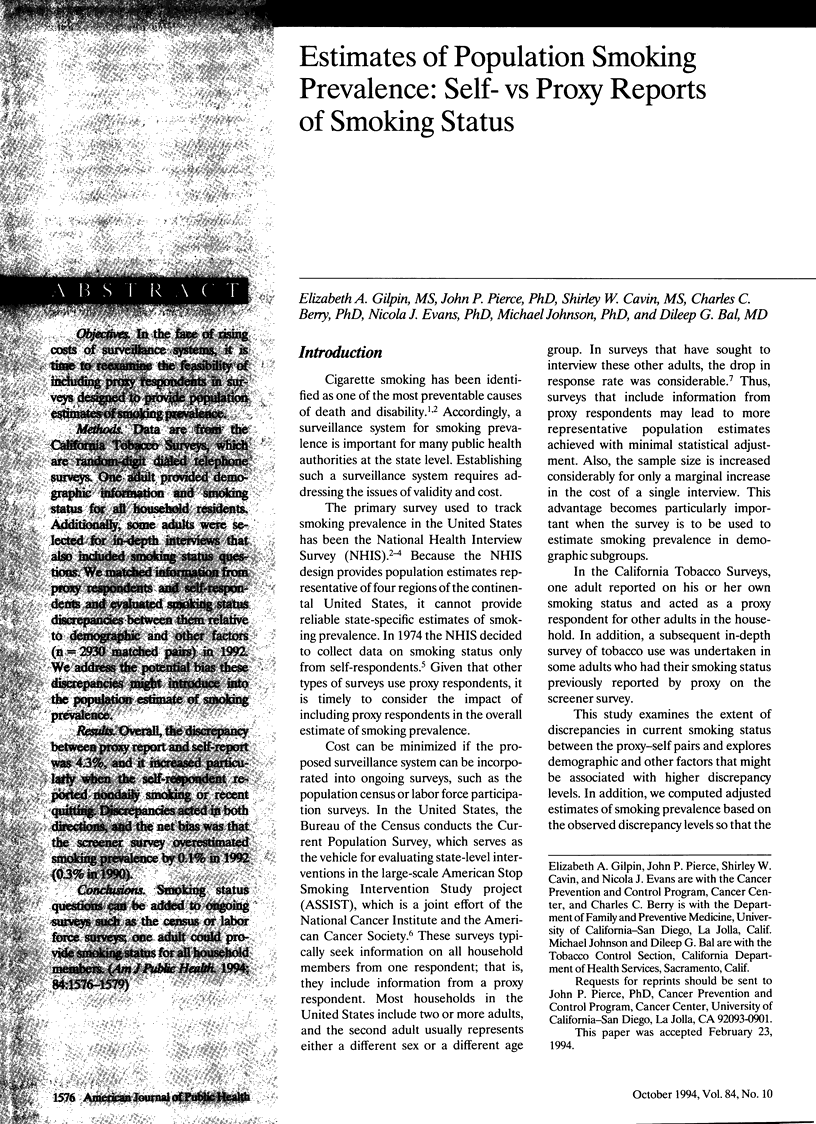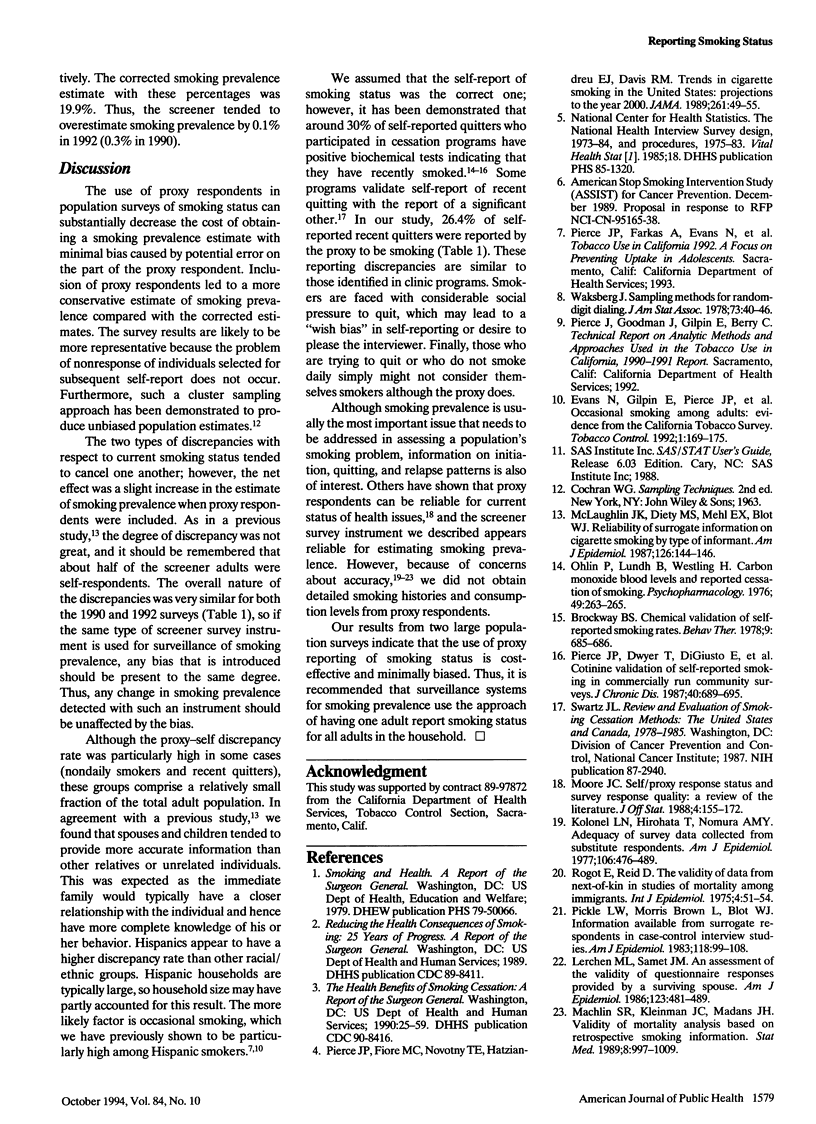Abstract
OBJECTIVES. In the face of rising costs of surveillance systems, it is time to reexamine the feasibility of including proxy respondents in surveys designed to provide population estimates of smoking prevalence. METHODS. Data are from the California. Tobacco Surveys, which are random-digit dialed telephone surveys. One adult provided demographic information and smoking status for all household residents. Additionally, some adults were selected for in-depth interviews that also included smoking status questions. We matched information from proxy respondents and self-respondents and evaluated smoking status discrepancies between them relative to demographic and other factors (n = 2930 matched pairs) in 1992. We address the potential bias these discrepancies might introduce into the population estimate of smoking prevalence. RESULTS. Overall, the discrepancy between proxy report and self-report was 4.3%, and it increased particularly when the self-respondent reported nondaily smoking or recent quitting. Discrepancies acted in both directions, and the net bias was that the screener survey overestimated smoking prevalence by 0.1% in 1992 (0.3% in 1990). CONCLUSIONS. Smoking status questions can be added to ongoing surveys such as the census or labor force surveys; one adult could provide smoking status for all household members.
Full text
PDF



Selected References
These references are in PubMed. This may not be the complete list of references from this article.
- Fiore M. C., Novotny T. E., Pierce J. P., Hatziandreu E. J., Patel K. M., Davis R. M. Trends in cigarette smoking in the United States. The changing influence of gender and race. JAMA. 1989 Jan 6;261(1):49–55. [PubMed] [Google Scholar]
- Kolonel L. N., Hirohata T., Nomura A. M. Adequacy of survey data collected from substitute respondents. Am J Epidemiol. 1977 Dec;106(6):476–484. doi: 10.1093/oxfordjournals.aje.a112494. [DOI] [PubMed] [Google Scholar]
- Lerchen M. L., Samet J. M. An assessment of the validity of questionnaire responses provided by a surviving spouse. Am J Epidemiol. 1986 Mar;123(3):481–489. doi: 10.1093/oxfordjournals.aje.a114263. [DOI] [PubMed] [Google Scholar]
- Machlin S. R., Kleinman J. C., Madans J. H. Validity of mortality analysis based on retrospective smoking information. Stat Med. 1989 Aug;8(8):997–1009. doi: 10.1002/sim.4780080810. [DOI] [PubMed] [Google Scholar]
- McLaughlin J. K., Dietz M. S., Mehl E. S., Blot W. J. Reliability of surrogate information on cigarette smoking by type of informant. Am J Epidemiol. 1987 Jul;126(1):144–146. doi: 10.1093/oxfordjournals.aje.a114647. [DOI] [PubMed] [Google Scholar]
- Ohlin P., Lundh B., Westling H. Carbon monoxide blood levels and reported cessation of smoking. Psychopharmacology (Berl) 1976 Sep 29;49(3):263–265. doi: 10.1007/BF00426827. [DOI] [PubMed] [Google Scholar]
- Pickle L. W., Brown L. M., Blot W. J. Information available from surrogate respondents in case-control interview studies. Am J Epidemiol. 1983 Jul;118(1):99–108. doi: 10.1093/oxfordjournals.aje.a113621. [DOI] [PubMed] [Google Scholar]
- Pierce J. P., Dwyer T., DiGiusto E., Carpenter T., Hannam C., Amin A., Yong C., Sarfaty G., Shaw J., Burke N. Cotinine validation of self-reported smoking in commercially run community surveys. J Chronic Dis. 1987;40(7):689–695. doi: 10.1016/0021-9681(87)90105-6. [DOI] [PubMed] [Google Scholar]
- Rogot E., Reid D. D. The validity of data from next-of-kin in studies of mortality among migrants. Int J Epidemiol. 1975 Mar;4(1):51–54. doi: 10.1093/ije/4.1.51. [DOI] [PubMed] [Google Scholar]


